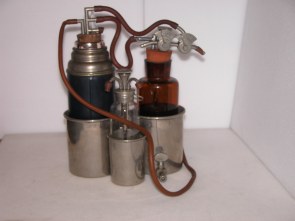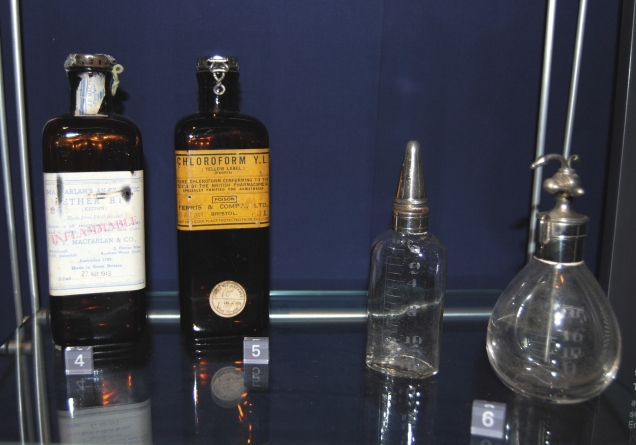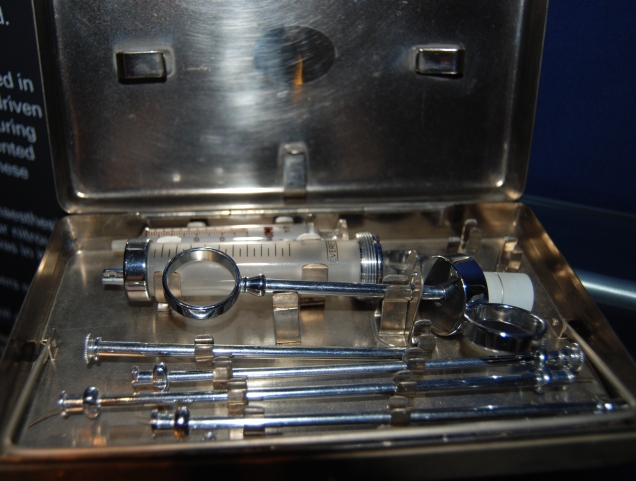The Riddle of Shock: Anaesthesia in the First World War
The Riddle of Shock was the second in a series of four exhibitions that commemorated the work of medical teams in the First World War. It was displayed in the Anaesthesia Heritage Centre from July 2015- July 2016.
The Great War saw unprecedented numbers of casualties arriving at Casualty Clearing Stations (CCS) close to death from shock. The cause was haemorrhage from gunshot and shell wounds, compounded by shortage of fluids and intense cold after soldiers had been transported by stretcher bearers working in intolerable conditions.
If badly damaged tissues weren’t excised within a few hours, gas gangrene could develop and the situation would become hopeless.
The appearance of a soldier suffering from shock and close to death with a pale skin, feeble pulse and beads of sweat was well known but poorly understood. Clearly the blood wasn’t in the skin, but where was it?
This exhibition explored the equipment and techniques developed during the First World War to treat the wounded, and how doctors coped with overwhelming numbers of casualties to solve the riddle of shock.
A look back at the exhibition
Operating and anaesthetising these soldiers might expedite death by compromising the body’s defence mechanisms. Geoffrey Marshall was sent to a CCS to investigate the effects of anaesthesia on wounded soldiers. For patients with abdominal injuries, Marshall recommended ether, given by Shipway’s warmed ether apparatus; for cases of penetrating injury of the chest or abdomen, he recommended chloroform.

Shipway three bottle vaporizer
Geoffrey Marshall established that chloroform and ether should not be used as anaesthetics on shocked patients although ether would initially maintain the blood pressure, before causing it to drop. Both were standard issue to the British Army medical services. Though many of the casualties of the war were young men, many were heavy smokers and lung disease or bronchitis was not uncommon. This could make the administration of inhalational anaesthesia difficult and the patients’ reactions hard to predict.

Ether, Chloroform and Drop Bottles
At first, spinal anaesthesia was thought to protect from shock. Geoffrey Marshall realised that its use was disastrous and advised the use of nitrous oxide and oxygen.

Spinal set, originally from St Christopher's Hospice, London
Francis Rynd, a Dublin surgeon, invented the hypodermic trocar, in 1845. This was a sharp-pointed surgical instrument that could be used to insert a cannula as a drainage outlet. Syringes were developed from these. From 1896 they were made entirely of glass, with disposable, plastic sterile needles and syringes not available until 1959. Syringes and needles during the First World War would have been reused, and sterilised and sharpened between patients.

Kidney dish and Barker needle